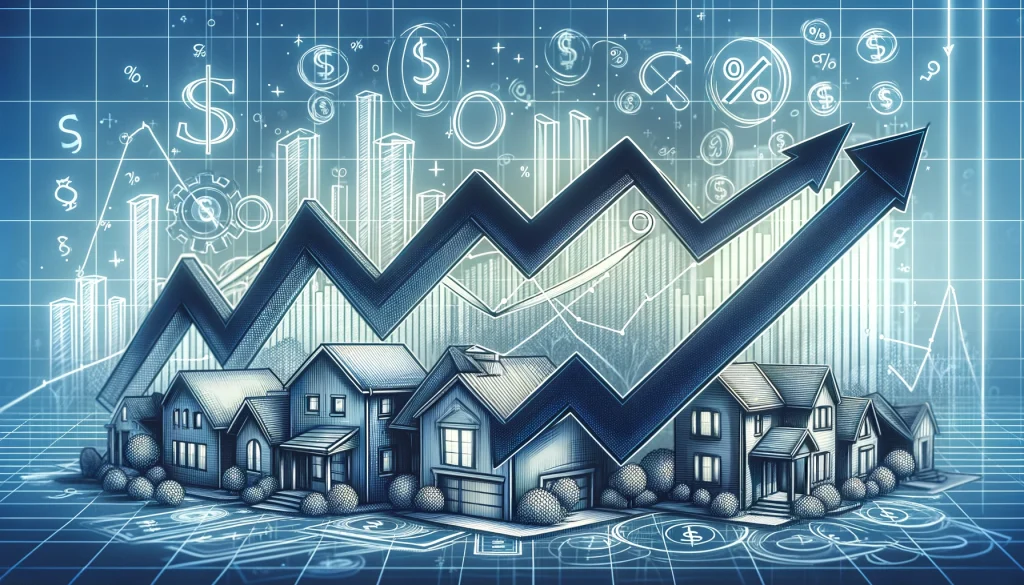
As the housing market ebbs and flows with economic tides, prospective homeowners and investors closely monitor the horizon for mortgage rate forecasts. With 2024 on the approach, the question on many minds is: are there potential drops in the offing for mortgage rates? Understanding the possible future of mortgage rates requires a multi-faceted analysis of economic indicators, policy decisions, and market dynamics.
Economic Indicators and Mortgage Rates
Mortgage rates are intricately tied to the health of the broader economy. Key indicators such as inflation, employment rates, and GDP growth play pivotal roles in determining the direction of mortgage rates. A robust economy typically leads to higher mortgage rates as demand for homes increases, while a faltering economy can lead to rate reductions as a measure to stimulate housing market activity.
The Federal Reserve’s Balancing Act
The Federal Reserve (Fed) is a critical driver of mortgage rate trends. Through its monetary policy tools, such as the federal funds rate and open market operations, the Fed influences short-term interest rates, which indirectly impact mortgage rates. If inflation concerns persist into 2024, the Fed may opt to raise rates to cool off inflationary pressures. Conversely, if economic growth is slower than expected, we may see a dovish stance with lowered rates to encourage borrowing and investment.
Global Economic Influences
The global economy also casts a shadow over mortgage rates. International trade agreements, foreign investment flows, and geopolitical stability all contribute to the economic climate that affects mortgage rates. For instance, if global markets face instability, investors may seek refuge in U.S. Treasury bonds, causing yields to decrease and potentially pulling mortgage rates down with them.
Housing Market Health
The state of the housing market itself will influence 2024 mortgage rate forecasts. Factors such as housing supply, demographic trends, and home prices can dictate the direction of rates. A surplus in housing inventory may lead to lower rates as lenders aim to spur home purchases, while a tight market with high demand could keep rates higher.
Technological Advances and Mortgage Lending
Technological advancements in the mortgage industry, including the rise of fintech and blockchain, could streamline the lending process, reduce costs for lenders, and potentially lower rates for borrowers. By 2024, increased competition fueled by technology may lead to more favorable mortgage rates as lenders vie for customers with efficiency and better rates.
Mortgage Rate Predictions for 2024
While the crystal ball is clouded with uncertainties, experts can make educated predictions for 2024 mortgage rates based on current trends. Should the economy continue its recovery trajectory post-pandemic, we might expect rates to stabilize or increase slightly. However, if the recovery wanes or unexpected economic shocks occur, there is a potential for rate reductions to rejuvenate the housing market.
The Role of Government Policy
Government housing policies and subsidy programs can significantly affect mortgage rates. Legislation that encourages homeownership, such as tax incentives or subsidies for first-time buyers, could influence mortgage rates in 2024. Attention to upcoming congressional sessions and housing-related bills will be key for those looking to forecast rates.
The Consumer Perspective
From the consumer’s perspective, even slight fluctuations in mortgage rates can have substantial implications for affordability and the cost of borrowing. It’s vital for potential homebuyers to stay informed about rate forecasts and plan accordingly, considering both fixed-rate and adjustable-rate mortgage options.
Impact of Consumer Behavior
Consumer behavior, influenced by broader economic conditions, is a significant factor in mortgage rate trends. In periods of economic uncertainty, consumers may be more cautious about taking on large debts like mortgages, potentially leading to a decrease in demand. This shift in consumer sentiment can prompt lenders to lower rates to attract borrowers.
Technological Disruption in Real Estate
The integration of technology in the real estate sector, particularly through online lending platforms and AI-driven risk assessment tools, could lead to more competitive mortgage rates. These tech advancements can reduce overhead costs for lenders and streamline the application process, potentially leading to more favorable rates for consumers.
Climate Change and Mortgage Rates
Emerging concerns about climate change can indirectly influence mortgage rates. Areas prone to environmental risks, such as flooding or wildfires, might see fluctuating mortgage rates due to higher insurance costs and changing demand. This dynamic could play a role in regional mortgage rate variations in 2024.
Long-Term Economic Policies
Long-term economic policies, including those related to housing, infrastructure, and taxation, can have lasting impacts on mortgage rates. Policies that promote economic growth and stability tend to support higher mortgage rates due to increased demand, while those that lead to economic slowdowns can result in lower rates.
Global Financial Market Trends
Global financial market trends, including bond market movements and international monetary policies, also influence U.S. mortgage rates. For example, if global investors view U.S. markets as a safe haven, this can drive down Treasury yields and, in turn, mortgage rates.
Demographic Shifts and Housing Demand
Demographic shifts, such as the aging population and the homebuying behaviors of Millennials and Gen Z, will impact housing demand and mortgage rates. Changes in population growth, urbanization trends, and generational attitudes towards homeownership can influence the direction of mortgage rates.
Credit Market Conditions
The condition of the credit market plays a crucial role in mortgage rate determination. Factors such as credit availability, lender risk appetite, and the health of the overall banking sector can significantly impact the rates offered to borrowers.
The Future of Work and Housing
The evolving nature of work, accelerated by trends towards remote work and gig economy, can influence housing preferences and, subsequently, mortgage rates. As people relocate based on lifestyle rather than job location, this could lead to shifts in housing demand in various regions, affecting local mortgage rates.
Conclusion
In charting the course for “2024 Mortgage Rate Forecasts: Potential Drops in the Offing?”, it’s evident that a multitude of factors will come into play. From Federal Reserve policies and economic indicators to global events and housing market dynamics, each element will contribute to the mortgage rate story of 2024. For those in the housing market, maintaining a watchful eye on these indicators will be crucial in navigating the mortgage landscape of tomorrow.



